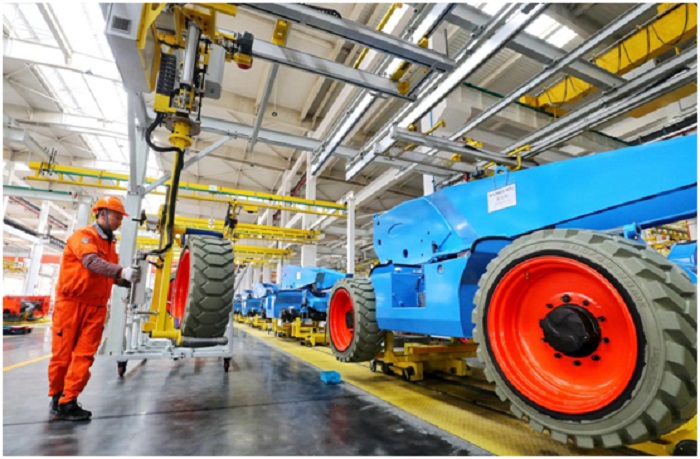



China’s top economic planner is confident that this year’s social and economic development targets will be achieved under the support of macro policies and the efforts of market entities, said a press conference held during the “two sessions,” or the annual sessions of the National People’s Congress and the Chinese People’s Political Consultative Conference.
In the first two months of this year, China’s economy maintained momentum of steady recovery gained since the second quarter of 2020, said Ning Jizhe, vice chairman of the National Development and Reform Commission (NDRC) during the press conference.
The approved power generating capacity and number of railway trucks loaded also increased 24.2 percent and 16.5 percent, respectively in the same period, Ning added.
During the Spring Festival holiday, the revenue made by key companies in retail and catering sectors rose 28.7 percent year-on-year, and 4.9 percent from that in the same period of 2019, prior to the COVID-19 pandemic. China’s box office revenues hit 12.26 billion yuan ($1.88 billion) last month, making the world’s highest single month record in a single market. Besides, the rates of work resumption among investment projects and construction enterprises after the Spring Festival were also higher than those from a year ago.
The purchasing managers’ index in the manufacturing sector, as well as non-manufacturing business activity index stood at 50.6 percent and 51.4 percent, respectively. The figures have been maintained above the threshold indicating an increase or decline in business conditions for 12 consecutive months.
Last year, China was the only major economy that secured positive energy, in which investment played an irreplaceable role, Ning remarked. This year, the country will keep major economic indicators within an appropriate range, and will further give play to investment, he added.
Ning introduced that 610 billion yuan from the central government budget will be allocated for investment this year, 10 billion yuan more than that in 2020. The capital will be leveraged on key areas including old urban residential community renovation projects, issues of agriculture, farmer and rural area, water conservancy, major infrastructure projects, major national strategies, social causes, and ecological progress.
The country will issue special-purpose local government bonds totaling 3.65 trillion yuan this year, and priority will be given to fund infrastructure and public service projects with certain returns, such as those in transport, energy, farming and water conservancy sectors, Ning said.
The investment in high-tech industries rose 10.6 percent year on year in 2020, 7.7 percentage points higher than the total investment growth. This year, China will further enhance macro-direction, better plan industrial layout, focus on energy conservation, new-gen information technologies, biology and new energy sectors, and expand investment in high-tech industries and emerging industries with strategic importance.
The country will launch a 14th Five-Year Plan for new infrastructure construction, vigorously develop digital economy, expand 5G application, and accelerate construction of industrial internet and data centers.
China will implement urban renewal strategy, advance renovation of old urban residential communities, and promote urbanization with townships as an important carrier.
Besides, it will advance a series of major transport and water conservancy projects including Sichuan-Tibet railway, Xining-Chengdu railway and Datengxia hydropower project.
Ning disclosed that China will further encourage non-governmental investment, keep expanding market access for private enterprises, support innovative development of the private sector, and encourage non-governmental capital in new infrastructure and new urbanization initiatives, major projects, as well as projects that bolster areas of weakness.
A fifth batch of major foreign investment projects will be rolled out this year, including supportive policies in industrial planning, land use, environmental assessment, and energy consumption. Advanced manufacturing and high technology will still be a main area for major foreign investment projects.


The Humanitarian Service Diamond Awards has.
A Chinese Company, Inner Galaxy Steel.


The Programme Coordinator, Regulatory, Compliance and.


A Non-Governmental Organization (NGO), Committee for.
The Trustfund Pensions Limited has chided.


The House of Representatives Committee on.
The China General Chamber of Commerce.


Senator Chuka Utazi who represented Enugu.


An Abuja based Legal Practitioner, Ugochukwu.


The African business community in Yiwu,.
Leave a Comment